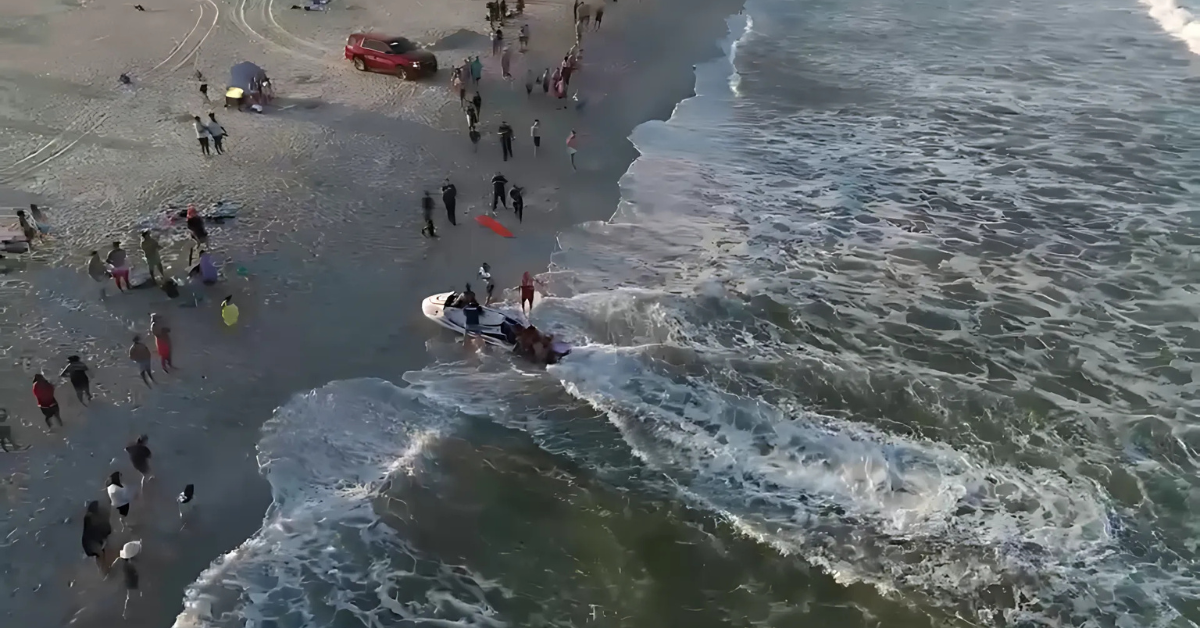A man lost his life after being caught in a strong rip current at a New York beach, police have confirmed. Rip currents are powerful, narrow channels of fast-moving water that can quickly pull swimmers away from shore, often leading to dangerous situations. This unfortunate incident serves as a grim reminder of the risks involved in ocean swimming, especially for those unfamiliar with beach safety.
Authorities have urged beachgoers to remain vigilant and understand the dangers posed by rip currents. Lifeguards and experts continuously warn about these dangerous currents, yet many swimmers underestimate their strength. rip currents cause over 80% of rescues performed by lifeguards, making them a serious threat at beaches across the United States.
What Happened at the New York Beach?
The incident occurred on a clear afternoon when the man entered the water unaware of the strong rip currents in the area. Witnesses reported that he struggled to swim back to shore as the current pulled him further out. Despite immediate rescue efforts by lifeguards and emergency responders, the man tragically drowned. Police have identified the location but remind the public to avoid swimming in unsafe weather and water conditions.
Rip currents can form suddenly and are often difficult for swimmers to spot. The U.S. Lifesaving Association explains that these currents can reach speeds of up to eight feet per second, faster than any Olympic swimmer, making escape extremely difficult without proper knowledge of how to react.
Understanding Rip Currents and How to Stay Safe
Rip currents are strong channels of water moving away from the shore, usually caused by breaking waves or changes in the seabed. When caught, swimmers often panic and try to swim directly back to the shore, which can lead to exhaustion. Experts advise swimming parallel to the shore to escape the pull before swimming back safely.
always swim near a lifeguard, check for warning flags, never swim alone, and learn how to identify rip currents. Wearing a life jacket and avoiding alcohol before swimming can also reduce risks significantly.
What to Do If You or Someone Else Gets Caught in a Rip Current
If you find yourself caught in a rip current, do not panic or try to swim directly against it. Instead, float or calmly tread water to conserve energy while signaling for help. Swim parallel to the shore to escape the current’s pull. If you see someone else struggling, alert a lifeguard immediately; do not attempt a rescue unless you are trained to do so, as many would-be rescuers also get caught.
Lifeguards are trained to handle these emergencies, equipped with rescue devices and techniques. Being aware of local beach warnings and conditions can prevent many such tragedies.
The Bigger Picture: Rip Current Risks Across the Globe
This tragic event is not isolated to New York. Beaches worldwide face similar risks, especially during warmer months when more people visit the water. Drowning is a leading cause of death globally, with rip currents responsible for significant fatalities in coastal regions.
Education and awareness are key to reducing these incidents. More public campaigns and better beach signage are needed to help swimmers understand the dangers and how to respond. Involving younger audiences through schools or social media can spread critical safety messages widely.
Conclusion: Staying Safe by Respecting Ocean Forces
The loss of life due to rip currents is heartbreaking and avoidable with proper knowledge and caution. If you’re planning a visit to a beach, always check local conditions, swim near lifeguard stations, and learn how to react if caught in a rip current. Being prepared can save lives and ensure that your beach experience remains enjoyable and safe.
Remember, the ocean is beautiful but powerful. Respect its dangers, stay informed, and encourage others to do the same to prevent further tragedies.







